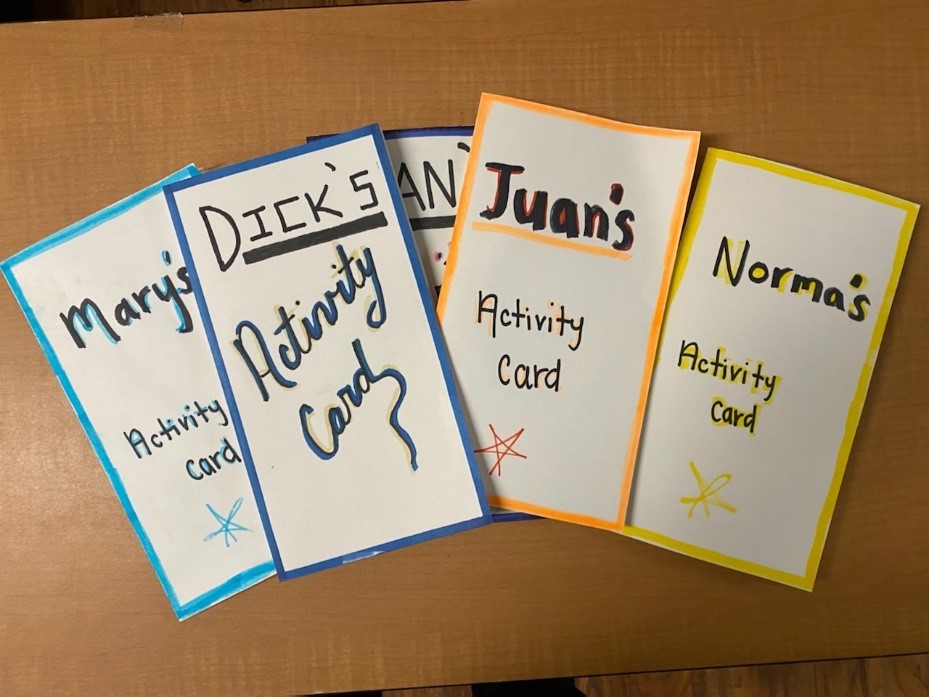By Carly Peevers, SLP and Andrew Folmar, OT Rosewood Rehabilitation, Reno, NV
You’ve done the assessments, sensory profiles, interventions, accumulated all this information about your residents to create a specific maintenance program within their Allen Cognitive Level, but what now? How do we effectively share and educate the caregivers to create a successful functional maintenance program and have a place where they can reference this information as needed? This was a question we had early on in the Abilities Care Approach, and that’s when our facility implemented activity cards.
Activity Cards are a summary of the information collected throughout the intervention which may include:
• Stage specific recommendations within different environmental and activity demands, personally relevant activities with modifications and strategies for this patient,
• Pertinent life history and
• Sensory information that may assist in engagement and/or management of behaviors
in order to increase meaningful engagement, quality of life, and maintenance of cognitive and/or communicative function.
What does the Activity Card look like on paper? We use a tri-fold pamphlet to present our information. The front has a color outline corresponding to their ACL level (red, orange, yellow, blue). On the inside there are three columns.
• The first provides a list of activities/interests and modification recommendations.
• The second column is a summary and description of current abilities in cognition (attention, problem solving, sequencing etc.), communication, physical strengths and limitations during ADLs, and possible barriers in their cognitive function.
• The third column is a running shopping list that incorporates this patient’s personal interests and functional needs (grooming/hygiene supplies, sensory stimulation tools, clothes, etc.). We attach this pamphlet to the patient’s life history board with Velcro so it is easily accessible to all caregivers and support staff for a quick reference.
We hope this information helps others with their caregiver engagement for dementia residents.

